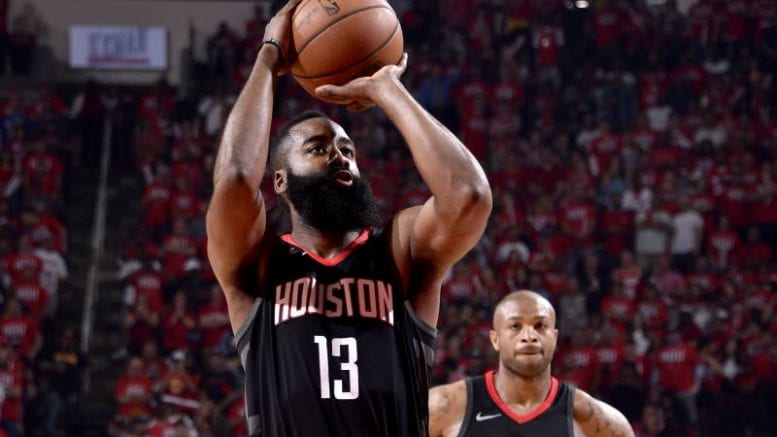Author: Rohan Balakrishna (Weinberg ’22)
True Shooting Percentage (TS%) has become a widely measured metric to describe a player’s shooting efficiency. The stat is calculated similarly to traditional FG%, but it accounts for differences in shot selection. It appropriately weighs free throws, 2-pt field goals, and 3-pt field goals. Last year, stars like James Harden (.54 3-point attempt rate, .449 free throw attempt rate) and Paul George (.47 3-point attempt rate, .34 free throw attempt rate) have reaped the benefits of adjusting their shot selection to extreme lengths.
An alternative shooting metric to TS% is Effective Field Goal% (eFG%), which tells a similar story about a player’s efficiency but does not include free throws. While eFG% is certainly a useful metric for measuring performance on the court, more and more analysis on the NBA is using TS% to judge scoring efficiency, because it better captures how players can achieve elite efficiency from smart shot selections. Most players in the NBA have a higher TS% than FG% in part because they shoot free throws at a better percentage than normal field goals. However, some players increase their TS% from simply attempting more free throws than shooting them well. This might seem counterintuitive but consider this example:
- Player A: shoots 40% on 5 3-pointers, 60% on 5 2-pointers, and 70% on 10 free throws per game
- Player B: shoots 40% on 5 3-pointers, 60% on 5 2-pointers, and 80% on 5 free throws per game
Both players have the same shot profile on 2-pointers and 3-pointers, but player A shoots more free throws at a lower rate than player B. The formula for TS% is
The magic constant of .44 is used to account for the fact that most free throws come in pairs, the occasional and-1 and the sporadic influence of technical free throws. Using these two players as examples, player A actually has a higher TS% than player B (.659 vs .655).
With these data points, I decided to look at the correlations between the increase in TS% as a result of free throws (TS%-eFG%) and FT% and FTAr. I found that in the 2018-2019 season, when excluding players that played less than 10 games, there was a .54 correlation between increases in TS% and FTAr. I chose only players that played more than 10 games as a way to control for small sample sizes creating unrealistic shooting percentages. In the sample, there was a .53 correlation between increases in TS% and FT%. When I decreased the sample size to only include players that played more than 40 games, I found that there was a .54 correlation between increases in TS% and FTAr and a .55 correlation between increases in TS% and FT%.
From this brief study, the data shows that there are two different paths to improving TS% with changes in free throw shooting. However, given that it is generally hard to improve shooting for players at the NBA level, it seems more feasible for the majority of players to try and get to the free-throw line more to improve their TS%. When Paul George posts seemingly impossible stat lines like 37 points on 17 total field goal attempts, it is important to recognize the ruthless efficiency that he displays is a result of being efficient at the free-throw line as well as being able to get those high-percentage free throw attempts at an elite rate. James Harden, Giannis Antetokounmpo and other stars have revolutionized how superstars should approach shot selection and play style. Free throws are never completely “free” but they are the pillar on which MVP resumes are being built.


Be the first to comment on "What Matters More for True Shooting Percentage: Free Throw Attempt Rate or Free Throw Percentage?"